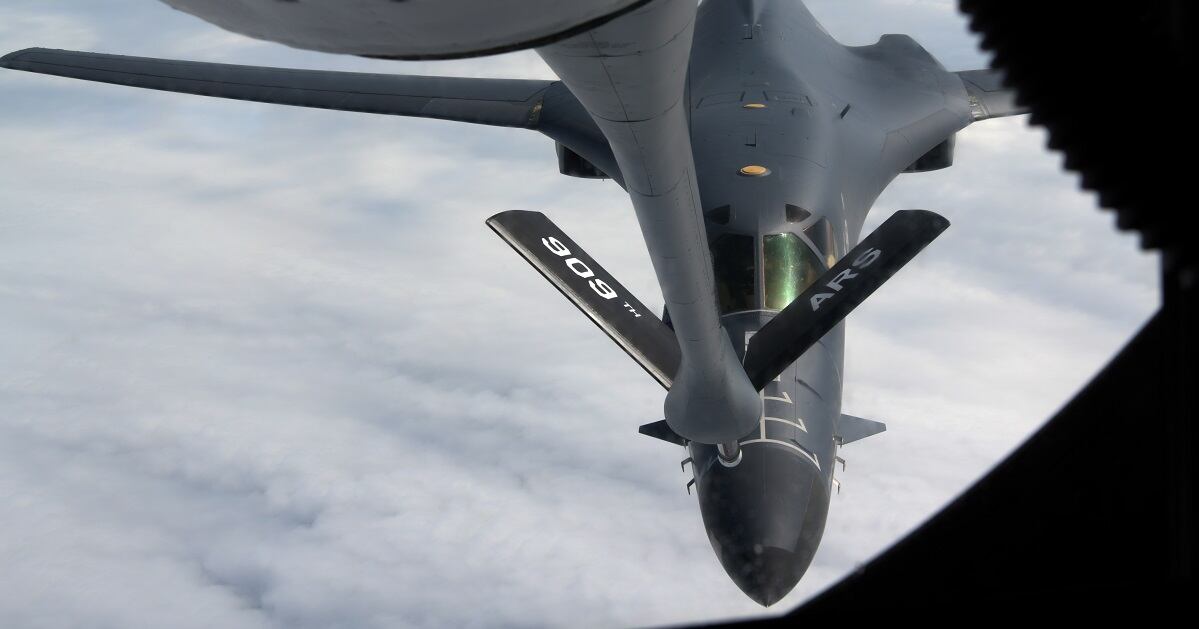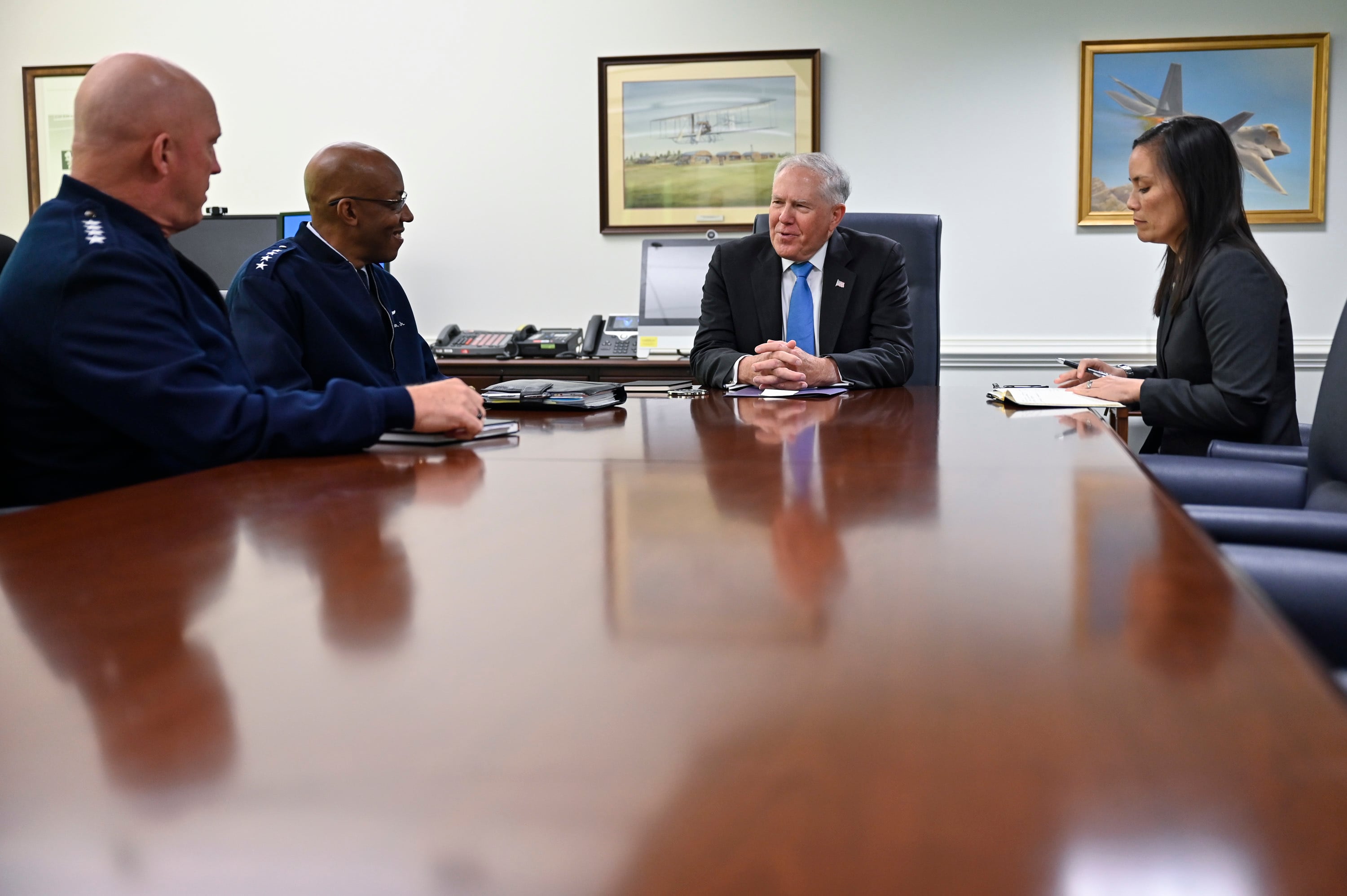NATIONAL HARBOR, Md. — Air Force Chief of Staff Gen. Charles “CQ” Brown’s directive to airmen to “accelerate change or lose” is gaining momentum after a year in practice, but the work to revamp the service’s culture has only just begun.
The Air Force’s top officer announced his overarching vision for a more flexible and capable force upon starting the job in August 2020. Four months later, he unveiled a set of directives intended to spur change in four areas over the next few years: empowering airmen; shrinking bureaucracy; global competition, and future force design.
“Some things are going better than others,” Brown said during a roundtable with reporters at the Air Force Association’s annual conference here Monday. “Part of this is the culture change as much as it is the ‘A, B, C, D’ [action orders], which will take some time.”
Brown has pushed for troops to learn a broader set of skills than what’s in their job description, regardless of their specialty; for high-level commanders to trust their subordinates to do what’s right for their units; for a deeper understanding of the United States’ military and economic tensions with Russia and China; and to cut outdated and unaffordable aircraft from the inventory, among other goals.
RELATED

The Air Force outlined its progress in a press release earlier this year, noting that Brown’s directive had spurred airmen to tackle projects like diversifying recruitment efforts, overhauling cyber warfare training and better connecting airmen with support services for their kids.
“Airmen at Air University’s Chief Master Sergeant Leadership Academy at Maxwell AFB, Alabama … designed a Command Senior Enlisted Leadership course in collaboration with their Estonian military counterparts,” the Air Force added. That course, planned for this month, “will help senior enlisted leaders gain a greater understanding of the needs of all nations bordering the Baltic Sea, and how the U.S. and allies can work to amplify their collective strengths against competition in the region.”
One of the slowest-moving efforts is aimed at slashing bureaucratic red tape. If the Air Force was competing with the notoriously slow-moving Office of the Secretary of Defense for the most bureaucracy, Secretary Frank Kendall quipped, “I don’t know that [OSD] would win.”
As part of those endeavors, the service found it has several dozen governance bodies that are trying to make decisions to move the Air Force forward but often end up cancelling each other out. It also acknowledged that senior leaders are sometimes too far removed and don’t always have the information that they need to make sound decisions.
Brown indicated the Air Force could abolish certain working groups and other governing organizations that add “more time than value.”
Still, that doesn’t mean officials should go it alone. Brown recalled feeling disconnected from decisions made in the Pentagon when he was serving as the Pacific Air Forces commander nearly 5,000 miles away in Hawaii.
RELATED

The solution to moving faster as a team is to start debate on issues earlier in the decision-making process rather than wait until a conversation reaches the top generals, and to keep leaders in the loop on changes made at lower levels without getting them involved, he said.
He’s still plenty aware of the power a four-star can wield in resolving sticking points that may arise.
“I bring members of the staff into my conference room and go, ‘We’re going to sit down and talk about this,’ because otherwise they’ll staff it amongst themselves, keep me out of the loop, and I probably could actually help them one way or another by either making a decision or providing direction,” Brown said.
Moving forward, Kendall has suggested that the service review its work once a year to ensure the efforts are still helpful and on the right track. Shepherding those along will be a key focus of Brown’s second year in the seat, the general said.
To keep tabs on the sweeping, multiyear strategy, Brown regularly meets with the officers in charge of bringing each action order to fruition.
“I sit down with them, spend an hour with them, to ask them questions: Where are the roadblocks? Where can I help?” he said. “Let me know how it’s going, so we can break down some of the barriers that may be implied because they misconstrued my intent or come up with their own ideas.”
RELATED

The Department of the Air Force’s new civilian leaders hope to make their mark on future planning soon: Undersecretary Gina Ortiz Jones is exploring ways to streamline the department as it has grown to encompass both the Air Force and the Space Force, to make sure each service has clear lines of authority and accountability.
“I think what’s been extremely important is the secretary’s vision about working as a department and making sure that every effort we’ve got reflects certainly the Air Force’s equities as well as the Space Force’s equities … given not only what they do for the Air Force, but for the joint force,” Jones said.
When Kendall came into the top civilian job, the department already had studies and wargaming underway to explore the right mix of fighters, bombers and other assets it wants for its future squadrons. The secretary told Air Force Times in August that he wants to launch further data-driven analyses to see where the Air Force and Space Force are falling short on personnel, ops and policy.
Brown urged airmen to take matters into their own hands rather than wait for leadership to act.
“We could all use more manpower, more money and more time. But leaders cannot wait for perfect conditions to act or make a decision, because perfect conditions will never exist,” he told the force on Monday. “What if you received no additional manpower or resources, but were empowered to prioritize what was important and were relieved of constraints? I challenge all of us to start thinking this way, because we are in a zero-sum game situation.”
Rachel Cohen is the editor of Air Force Times. She joined the publication as its senior reporter in March 2021. Her work has appeared in the Washington Post, the Frederick News-Post (Md.), Air and Space Forces Magazine, Inside Defense, Inside Health Policy and elsewhere.





